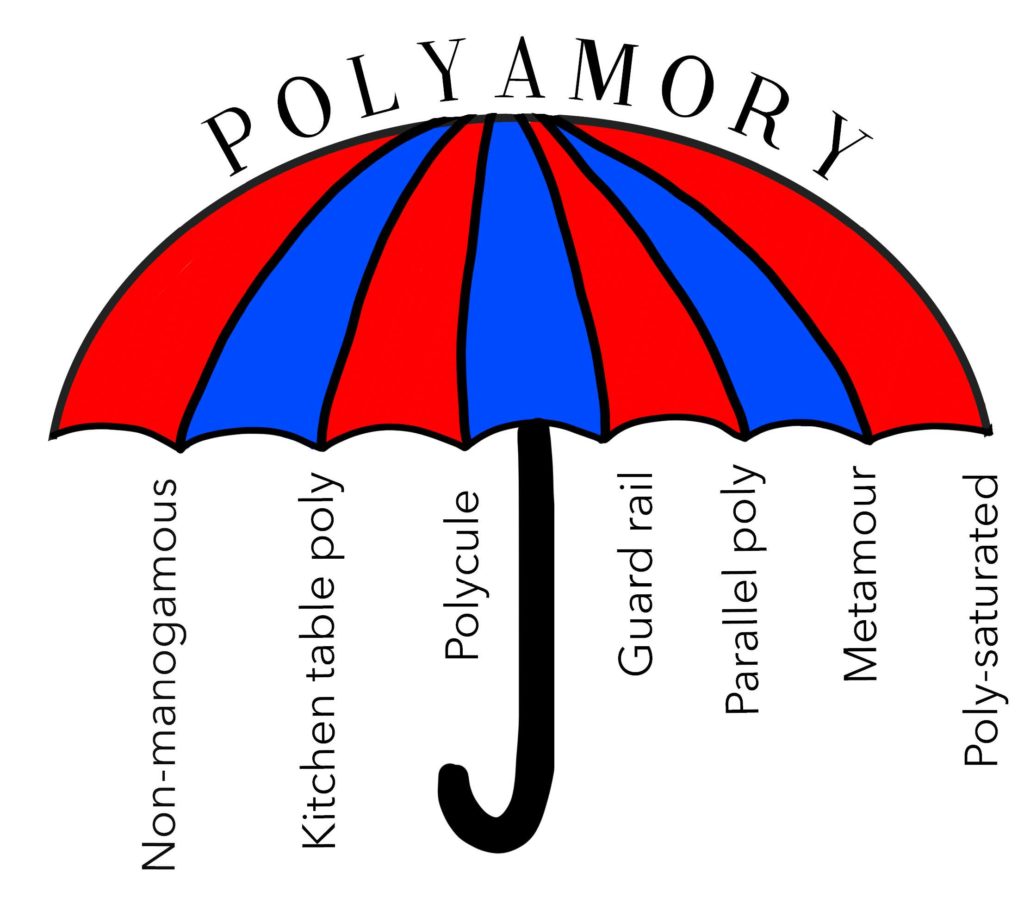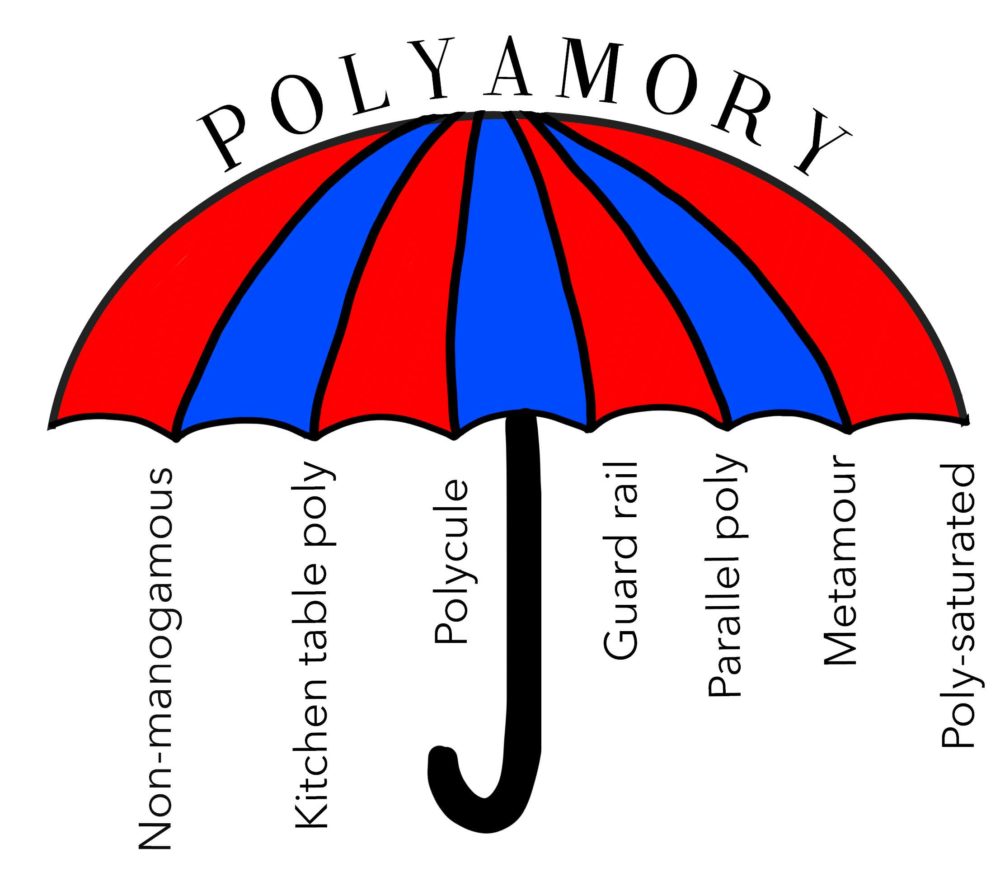PolyAware meeting brings answers to polyamorous questions

February’s PolyAware meeting brought polyamorous people together to talk about consent, education, communication and terminology.
Growing up, many people witness one kind of relationship, two people together, no other partners, and they are expected to be together for the rest of their lives. When this isn’t the case, people have questions.
The term “polyamorous” can also be called consensual non-monogamy. This means there are multiple partners within the context of a relationship, and everyone involved in that relationship is OK with it.
Generally speaking, people who are polyamorous do not feel like the expectation that one person can be everything for someone else is realistic for them.
The meeting began with Lindsay Fouke, coordinator of the event, starting the discussion of the challenges often faced by poly people.
She began by talking about some research she had done and some experiences of her own, such as initially experiencing apprehension about coming out as polyamorous, struggling to define an identity or failing to find a therapist or counselor to talk to about polyamory, as there is only one openly poly therapist in the Fargo-Moorhead area.
Other participants, who have chosen to remain anonymous, expressed feelings of fear in telling people they are polyamorous.
Within the relationship, there are other challenges poly people experience, like dealing with feelings of jealousy and replacement, according to the participants present.
Fouke said that, when beginning to practice and express her polyamory, the hardest part was working through emotions of jealousy.
A therapist who works with the poly community, John Lyon, was also at the meeting. He reinforced the notion that communication is key in polyamorous relationships and in all relationships. He also noted that monogamous relationships could learn a lot from polyamorous relationships.
With that communication comes more discovery within the relationship, as noted by a couple that attended. This particular couple had been navigating polyamory and its interaction with their relationship for years.
Some participants said when they began practicing polyamory, it was hard for them to wrap their heads around the intricacies of it, and it continues to be hard for some of them.
The group agreed that relationships, poly or not, must evolve and change in order to survive, and that growth is painful.
One participant noted that when one of his partners begins seeing a new partner of her own, that he must once again overcome his “Neanderthal feelings.” That is to say, he must get over the feeling that he possesses his partner.
Holding in the jealousy that arises in a relationship can be hard to hold back, according to Lyon. It can’t be held back forever, and it’s very easy for a person to hold onto jealousy.
It’s also hard for someone to take ownership of the anxieties they feel in a relationship, but once a person opens up to their partner to address those anxieties or that jealousy the relationship can progress, though it will take time.
When the conversation moved onto consent, both in the bedroom and romantically, the group put a premium on “enthusiastic consent.”
Enthusiastic consent differs from simply the agreement to engage in an activity with someone.
Lyon spoke about observations he had made and read about over the years in his profession, noting that, specifically men, will get the “yes” required for consent with power and coercion. To back up these claims, Fouke cited some authors like Franklin Veaux and Harris O’Malley.
This “yes,” although an agreement, when made through the abuse of power or through coercion, is not enthusiastic consent and therefore should be discounted. In other words, this “yes” wouldn’t be considered consent.
Additionally, Fouke added that a “no” doesn’t need to be explained when it comes to consent.
“Men get told that the only way they can meet their intimacy needs is through sex, and if they can’t get those connections met it can be explosive,” Lyon said.
A participant shared his experience from when he was a college aged guy, when he had not yet understood “enthusiastic consent.” He admitted that looking back on the time he probably made a few women uncomfortable.
He also noted that if that same discomfort happened to one man every day for a year, it wouldn’t come close to the number of women who have similar stories.
He explained his experience, and that of many young men, as a failure to “see past the end of your dick,” adding that he had never been taught enthusiastic “yes” consent, only a “not no” kind of consent.
Several participants expressed they wished there was more education being done on consent and enthusiastic consent.
While sexual consent is applicable to having sex, finding a comfortable and consensual version of a polycule that fits you can be more difficult and involve a lot of open and honest communication.
A polycule is how someone would explain the extent of their polyamorous relationships. It can be described as a map of how all partners interact within the relationships between poly individuals. The partner of a partner is known in the community as a metamour.
Something that can be helpful for defining the boundaries of a polyamorous relationship is facilitating conversation and focusing on the wants and needs of a partner and balancing those with your own. It is also important to know that there may be guard rails, temporary limits to some aspects of the relationship dynamics and negotiations and that the communication should never end.
To emphasize this point, Foulke cited Elisabeth Sheff, Ph.D. and author, who notes that communication is the most defining feature of a relationship.
Throughout the conversation, the point of perception came up. More specifically, participants were reminded that “perception trumps reality.” That is to say, even if a partner may seem to have some unconventional concerns, some that may even seem outlandish, the feelings at the root of those thoughts still warrant validation and discussion.
If the conversation occurs between multiple partners simultaneously, it’s important that all feel safe and comfortable in the discussion, and people should know that some partners may feel more comfortable with a one-on-one conversation.
To explain the importance of communication, Lyon offered the following anecdote: we are incapable of walking in a straight line without our sight to help us correct our path — similarly, we are incapable of relationships without communication.
There are several formats to polyamory, and each relationship is different and comes with different dynamics. One version of polyamory is the anarchy format. Another is the hierarchy format, and there are many more beyond these.
The hierarchy format is having a primary, secondary, tertiary, etc. format to the relationship. This means the primary partner would be the most serious relationship, like a husband or wife, he secondary may be a girlfriend or boyfriend and so on.
The anarchy format means that every relationship within that polycule is on the relationship escalator, a device used to describe the levels within a singular relationship (dating, becoming official, marriage, etc.). All have potential for a life commitment of romantic love.
Fouke noted that “many monogamous relationships follow the relationship escalator, and that it is not a realistic standard for polyamorous relationships.” This is because of its focus on one partner.
For those interested in attending the next monthly meeting, they happen every fourth Sunday of the month at the Pride Collective location. On the agenda for March is negotiation, dealing with insecurities, including jealousy and more.
If someone feels they may identify as polyamorous, Fouke recommended looking into resources like reliable internet sources, podcasts and the book “The Ethical Slut” by Dossie Easton. Additionally, any and all are welcome to attend the monthly meeting, even those who identify as monogamous and simply want to educate themselves.
Fouke gave the following statement regarding transitioning from monogamy to polyamory within a relationship: “As someone who transitioned from a monogamous to polyamorous lifestyle, I would recommend allowing your partner time to perform research, ask questions and to decide if the dynamic of a polyamory/consensual non-monogamy lifestyle is something that they are interested in exploring.” Additionally, taking a look at the Relationship Bill of Rights can be helpful for monogamous and polyamorous couples alike and can be found here: https://www.morethantwo.com/relationshipbillofrights.html
Students with further questions can feel free to email polyawarend@gmail.com or follow the PolyAware group on Facebook to receive upcoming event information: https://www.facebook.com/PolyAware/?eid=ARAI3AmzkkTf-HZWnebg3sODPzz4bl–UqK2cjeDl3U1eW0JEEw9P9HNuhopY6FURk4MMYQHM5PWlAEA
